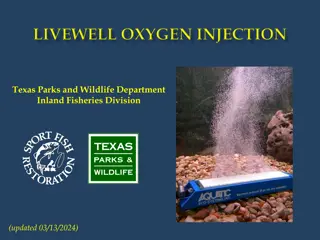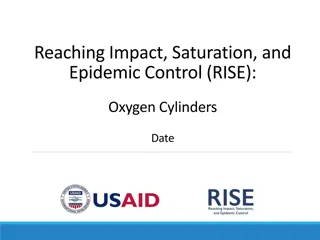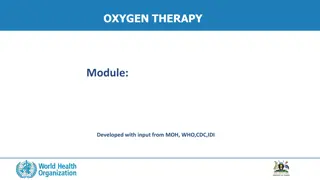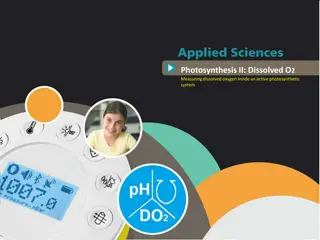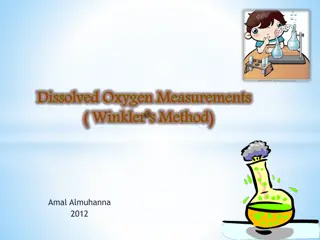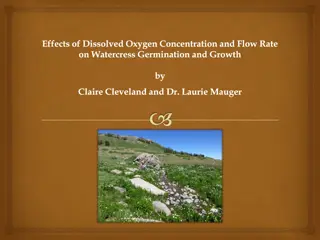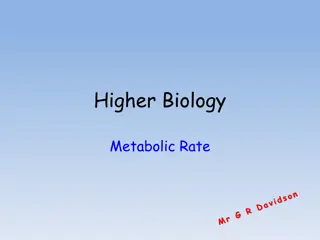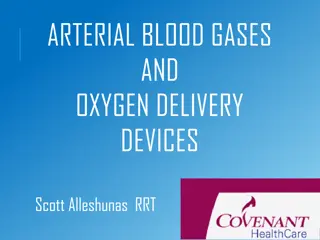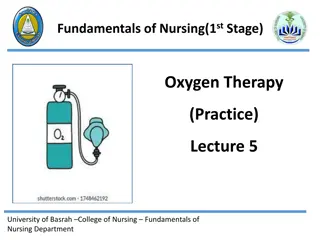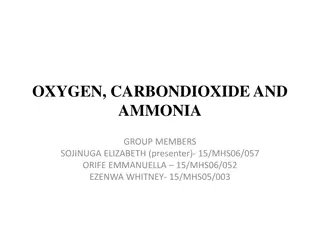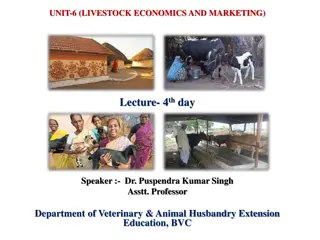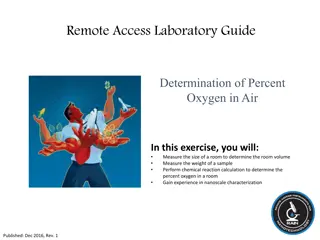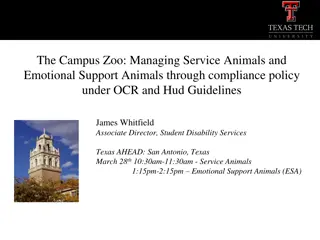Importance of Transport System in Animals for Oxygen Supply
Animals require a transport system to meet tissue oxygen demands efficiently. The size limit for oxygen diffusion alone is around 1 mm due to the proportional increase in radius and diffusion properties. Blood is crucial for transporting oxygen, nutrients, waste products, cells, and heat, as well as for various physiological functions in animals of different sizes. Circulatory systems vary in inverts and vertebrates, with open and closed systems providing necessary mass flow transport for oxygen and nutrients. The circulatory system consists of blood vessels, the heart, and blood, vital for maintaining physiological functions in animals.
Download Presentation

Please find below an Image/Link to download the presentation.
The content on the website is provided AS IS for your information and personal use only. It may not be sold, licensed, or shared on other websites without obtaining consent from the author. Download presentation by click this link. If you encounter any issues during the download, it is possible that the publisher has removed the file from their server.
E N D
Presentation Transcript
Transport in animals Why we need a transport system? 3 week old larval anchovy How big can you be and still meet O2demand of tissue simply by diffusion? The larval anchovy (average body radius = 0.6 mm) can meet all of its metabolic demand by uptake of O2by diffusion. The respiratory and circulatory systems will take over to supply O2 to the tissues. Any animal larger than 1 mm cannot rely on diffusion alone.
Gases diffuse far more readily through gas than aqueous solutions Radius (distance to the geometric body center) increases proportionally to body size. Again, any animal with a body (made of water) radius > 1 mm cannot obtain (or release) gases simply by diffusion, so you need a circulatory system and a medium in that system, i.e. blood. Length = 2 Radius = 0.5 Length = 4 Radius = 1
Why have blood? Transport of nutrients from digestive tract to tissues, to and from storage organs Transport of cells including cells of nonrespiratory function (e.g., leukocytes in verts, numerous cell types in inverts) Transport of metabolites (e.g., lactic acid from muscle to liver) Transport of heat Transport of excretory products from tissues to excretory organs Transmission of force e.g., locomotion (earthworms, spiders), erection of penis Transport of gases respiratory organs to/from tissues Coagulation Transport of hormones
Open vs Closed Circulation Open circulatory system: is characteristic of many inverts. Closed circulatory system: is found in all vertebrates and some inverts (e.g., cephalopods). Blood (hemolymph) empties into hemocoel and bathes tissues and organs directly Low pressure, high volume (up to 40% of body mass) Blood remains in vessels; capillaries allow close contact between blood and tissues Arterial system: high pressure, takes blood away from heart Low volume (5-10% of body mass) Animal typically has hard shell or exoskeleton. Insects have an open circulatory system, but do not use it for oxygen transport.
Mass flow transport Needed for a constant supply of: Oxygen Nutrients Also needed to get rid of waste products such as: Carbon
3 Major Parts of the Circulatory system Blood Vessels - routes blood travels Heart pumps or pushes blood through body Blood carries important *stuff through body
head, neck superior vena cava and arms pulmonary vein lungs pulmonary artery aorta right left atrium atrium inferior vena cava right left ventricle ventricle hepatic artery hepatic vein liver hepatic portal vein mesenteric artery gut renal vein renal artery kidneys body and legs
The Heart The heart is mainly made of cardiac muscle, each muscle cell is joined to the next by an intercalary disc. These cells are myogenic , this means they can contract and relax of their own accord throughout a human life
superior vena cava aorta right pulmonary artery left pulmonary artery pulmonary veins pulmonary veins right atrium left atrium bicuspid valve left ventricle tricuspid valve right ventricle septum inferior vena cava semi-lunar valves
Plasma Plasma- water, ions, proteins Plasma proteins albumin- provides osmotic pressure globulins- alpha and beta- transport gamma- antibodies (produced by lymphocytes; other proteins by liver) fibrinogen- clotting Plasma volume regulated by hormones like ADH
Formed Cells Erythrocytes- (red blood cells) no nuclei or mitochondria circulate for about 120 days 280 million hemoglobin molecules per cell Leukocytes (white blood cells) granular and agranular granular: neutrophils, eosinophils, basophils agranular: lymphocytes, monocytes capable of amoeboid movement Platelets- involved in clotting
The Cardiac Cycle ATRIAL SYSTOLE - Heart





